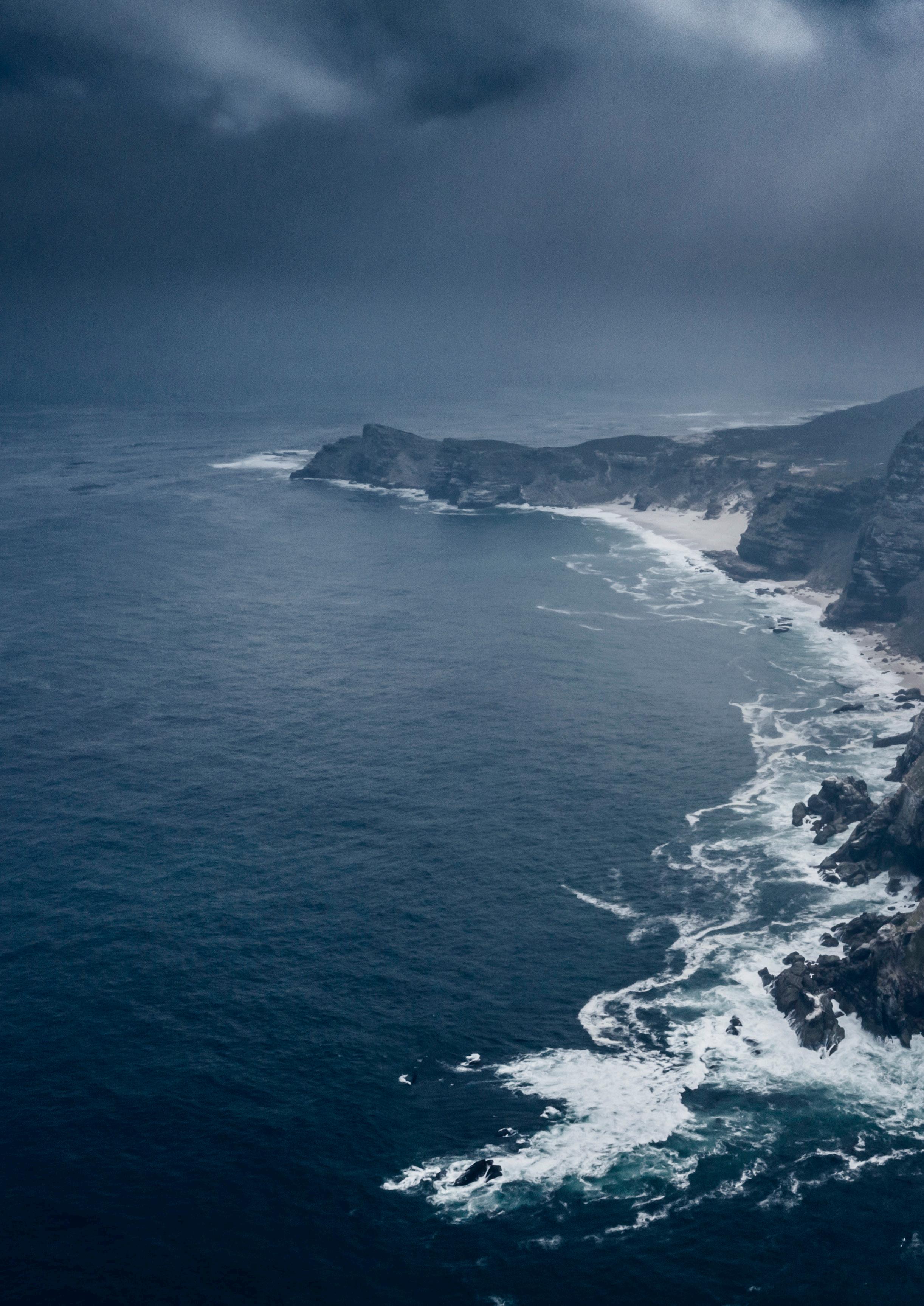
5 minute read
The Blues and Makos at the Cape of Good Hope
FEATURE AND PHOTOGRAPHY STEVE WOODS

Blue shark (Prionace glauca)
Advertisement
Breathtakingly dramatic and steeped in history, the Cape of Good Hope, or Cape of Storms as it was originally called, looks like it is straight out of a Hollywood movie or an enchanting children’s story book. The Cape of Good Hope is situated very nearly at the southern most tip of Africa (the real southernmost tip being a short ride away). Africa being the huge size that she is, separates the globe and its oceans into two hemispheres. On one side you have the Atlantic Ocean which connects Europe to the Americas, and on the other side, you have the warm Indian Ocean, connecting Africa with Asia. The possibility of a shipping route between Europe and Asia was such a momentous discovery that the Dutch East India Company (DEIC) instantly built a fortress and renamed the peninsula from Cape of Storms, to the Cape of Good Hope to make it more appealing to sailors.

Mako shark
The drama continues as you move off the land and into the waters surrounding the Cape as two giant oceans collide. The Atlantic and the Indian oceans meet at this point with two ocean currents. The warm Agulhas, and the cold Benguela converge creating dramatic microclimates above and underwater. This also draws in an immense amount of sea life from Cetaceans of all kinds, game fish and large schools of sardines.
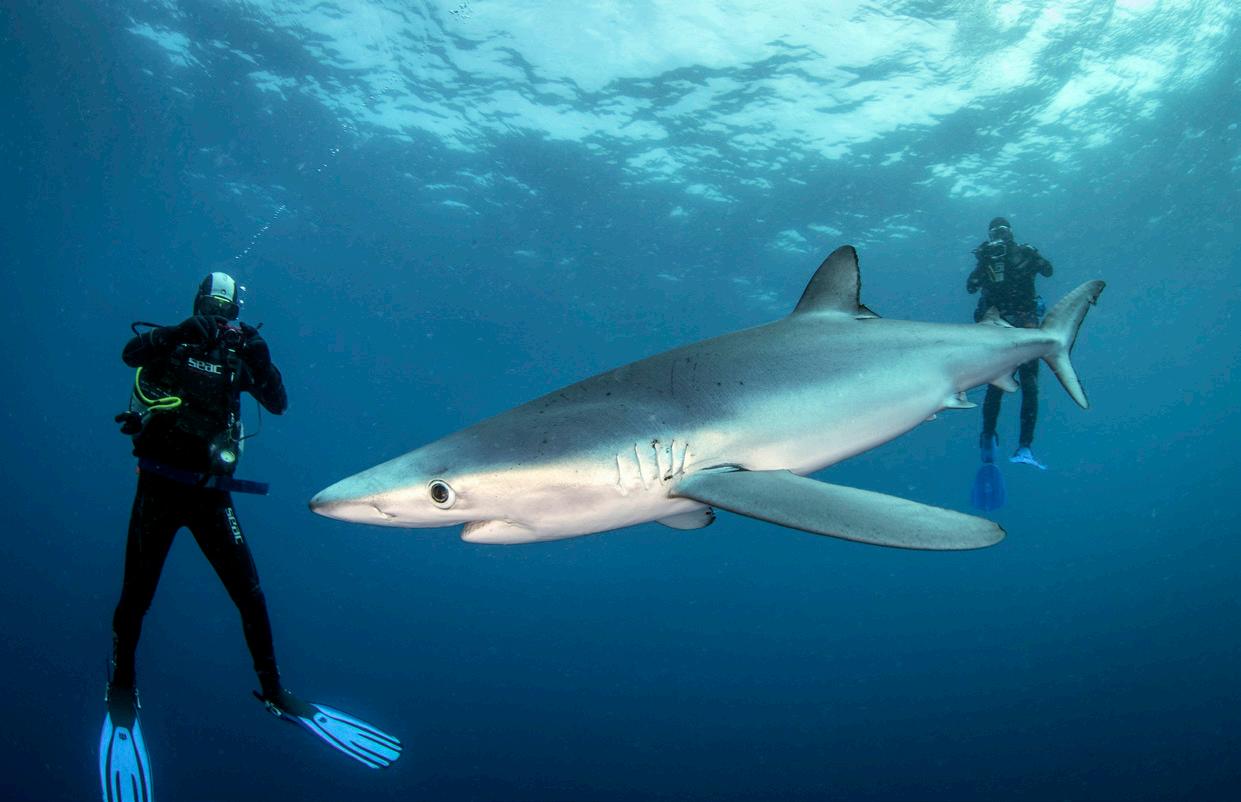
Blue shark
If you are patient, every once in a while, the conditions on the cape die down just enough to safely venture out to the open ocean. There are a few operators based in Simons Town that have the capability of operating safely in the open ocean, this time I was out with the great team at Pisces Divers. We set out just after sunrise and even with the best of conditions, we were ready for a very bumpy ride. Holding on tight, we motored out for a couple of hours and slowly started to see the cold green waters of the cape, turn warm, clear and blue. Around 30 nm offshore we killed the motors and got the coffee on.
Using Anchovy oil, we gradually built up a fishy oil slick to attract any sharks that may be in the area. Pelagic sharks are very inquisitive and will come and investigate pretty much anything, especially if it smells of dead fish. Having said that, pelagic sharks like Blues and Makos have been hit by the industrial fishing boats as by-catch, so hard that their numbers have dropped drastically. Roughly 20 million blue sharks are slaughtered every year and the Mako shark is listed as endangered by the IUCN. Having such low shark populations means that sometimes after a number of hours chumming the water, no sharks appear.

An arial view of a Shortfin Mako shark (Isurus oxyrinchus).
On this day we were lucky. We started to see the bright blue and yellow flashes of huge yellowfin tuna that had been attracted by the bait which was a good sign that there was life in the area and that our chum slick had started working. Not long after the tuna, one of the oceans most incredible animals turned up to investigate. A short-fin Mako shark.The fastest shark in the water! It can swim in bursts of over 70 km an hour and this incredible animal is on most divers must see lists. Shortly after that, two sleek blue sharks turned up to see what the commotion was all about as well. Once we had a number of sharks swimming around the boat, we started to kit up and get in the water.
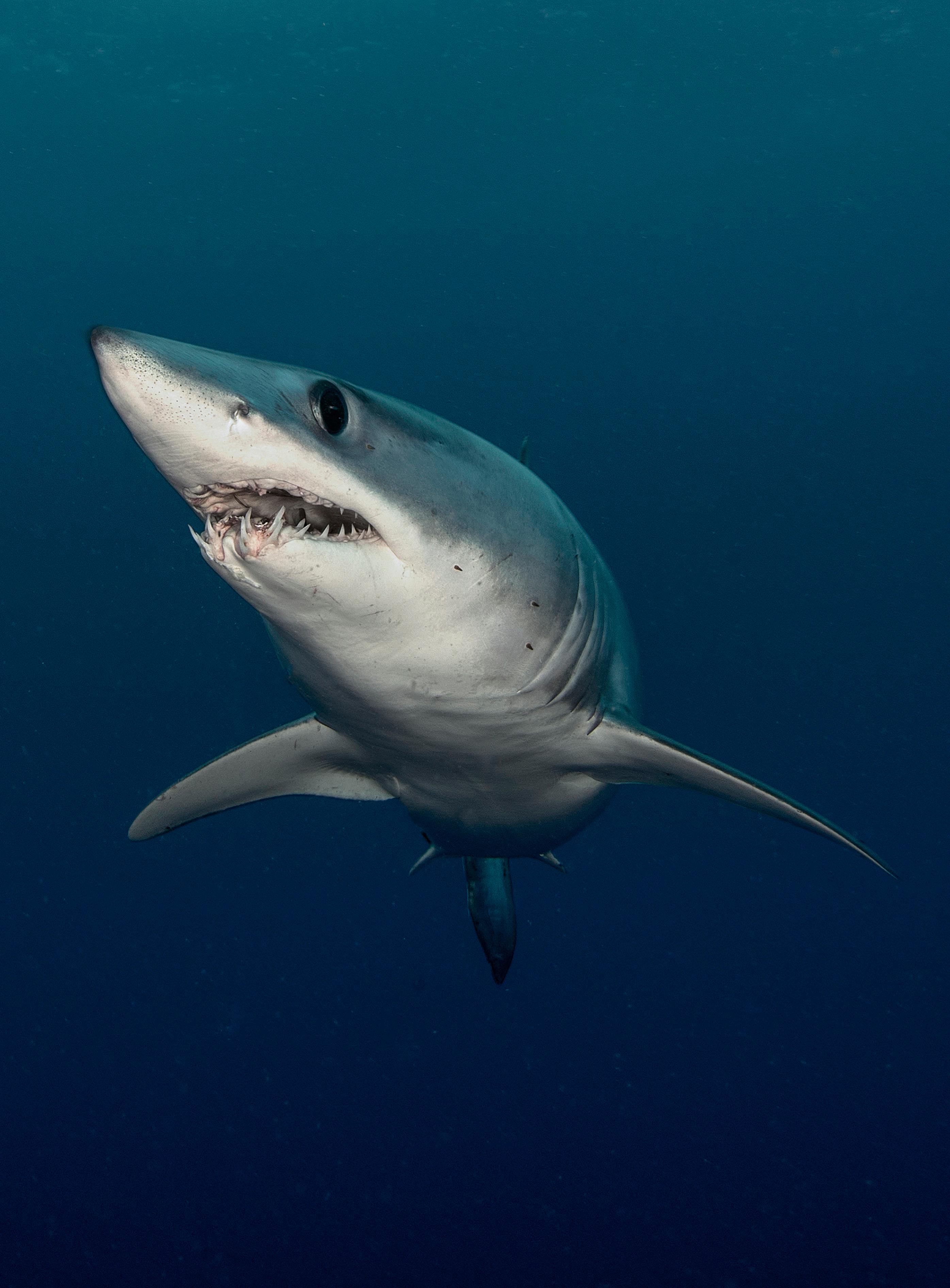
Shortfin Mako shark (Isurus oxyrinchus).
Being so far from shore, safety is a huge concern, especially when you are in the water that is thousands of metres deep. One wrong move, one small mistake, can lead to disaster very quickly. Trailing a rope behind the boat, 4 of us entered at the same time, making sure we were ready and moving as one group for our own safety. This is also critical for the sharks as we don’t want to scare them. Keeping as tight a group as possible allows them to have their space and come and investigate as they wish.
Once we were in the water, more sharks turned up and we ended up with 3 Mako sharks and 5 Blue sharks swimming around us in warm blue waters with 40 m visibility. This is every divers dream. The blue sharks behaviour and body shape is totally different to that of the Mako. They are much longer and slender. They swim almost like a ribbon through the water, and they will come up and use their nose to investigate you. Mako sharks on the other hand are shorter and have a much thicker girth which allows them to swim at great speeds. They are visibly more active, they swim fast and dart around the divers moving quickly and confidently.
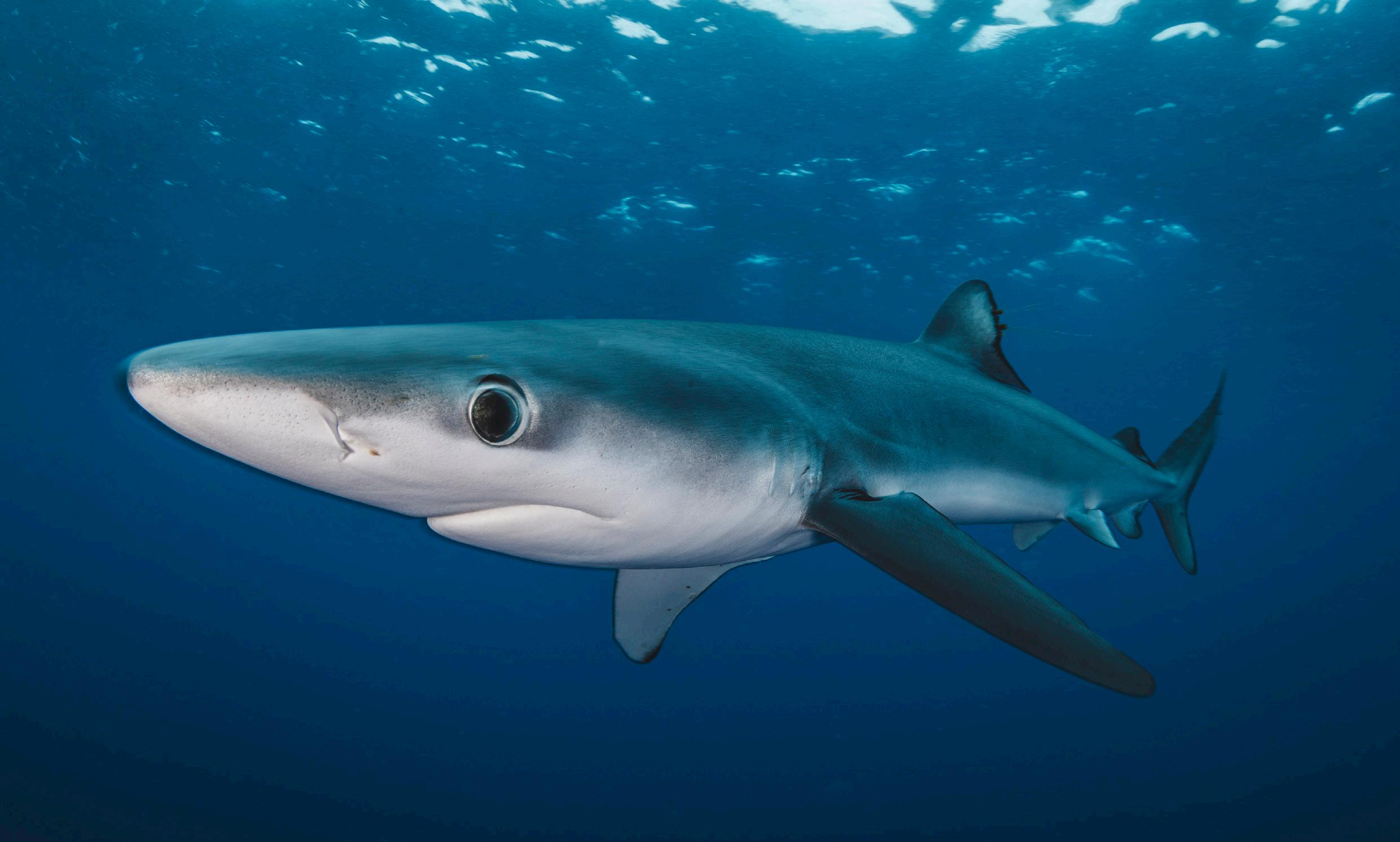
Blue shark (Prionace glauca).
After 60 minutes in the water, we all made the signal to ascend, completed our safety stop and then got back up onto the boat. Cruising the bumpy ride back to Simons town, we all shared some memories and stories of the epic adventure we had just embarked on. I would highly recommend heading out to do this kind of diving, especially if you’re in the Cape Town area, though blues and makos live in other oceans around the world. It is possible to dive with them in the UK, France, Spain, Portugal, as well as East and West coast USA, Mexico, and Canada to name a few. Safety is of upmost importance though and being an advanced diver is necessary to complete a trip like this.
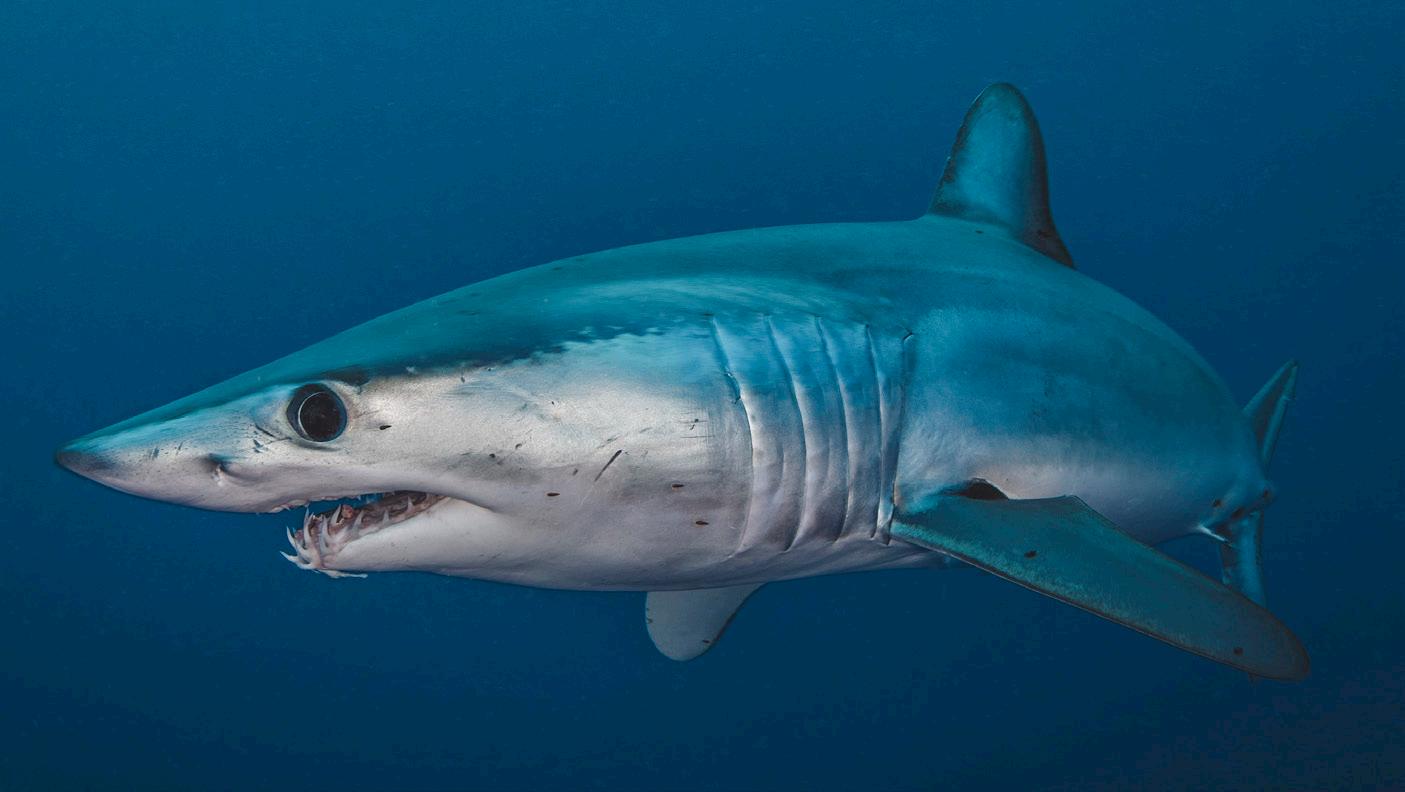
Mako shark










